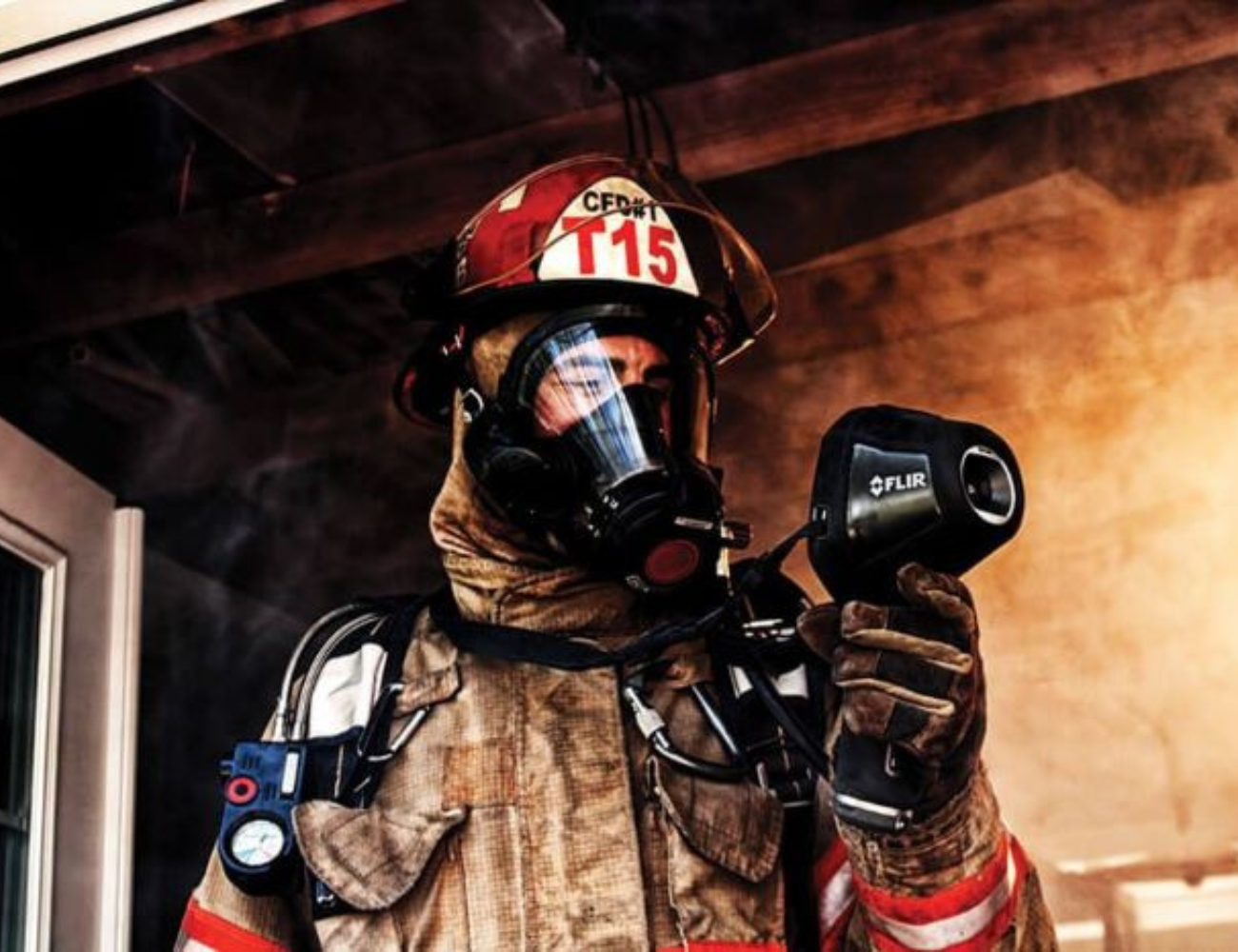Thermal Imaging Cameras: The Standard For Firefighting

About Thermal Imaging Cameras
No Stranger to Resistance
Veteran firefighters may remember when they first introduced ear flaps on helmets and protective Nomex hoods. When these were initially standardized in the industry, firefighters pushed back. Why? Because the flaps and hoods would not let you feel the heat, so you would not know when to get out.
With thermal imaging on the rise, the time to make a new standard is now. Significant advancements have been made in terms of personal thermal imaging cameras. But as to be expected, there has been some major pushback in early adoption. We can continue the trend, or we can set a new precedent.
Benefits Of Thermal Imaging Cameras
- Faster Primary Search: Find victims and hot spots quickly while time may not be in your favor.
- Self Rescue: Navigate in and out of zero visibility conditions, reducing the number of mayday calls.
- Reduce Rekindles: Run overhauls with confidence to ensure the fire has been completely extinguished.
- First Responders and Inspection: Observe the scene for heat-related clues such as heat loss or radiant wires or pipes.
TICs: What Can't They Do?
- Structure Fires, as mentioned above.
- Hazmat Responses: Visualize temperature differentials between the product and its surroundings. Determine a threat level, how much gas or liquid has spilled, and if it is spreading.
- Vehicle Crashes: Quickly assess the scene for spilled hazardous materials. Speed up the search for unaccounted passengers. Determine the total number of vehicles involved in low visibility.
- Outdoor Search & Rescue: Detect human body heat when the time is ticking.
- Wildland Fires: Quickly and accurately find hot spots and evaluate the fire to predict its trajectory and limit the damage.

Why Thermal Imaging Cameras Matter
Adopt & Adapt
According to the 16 Firefighter Safety Initiatives, number 8 sets the standard for adopting new technology in the firehouse. It reads, “Utilize available technology wherever it can produce higher levels of health and safety.”
Learn From the Vets
In an article written by retired Batt. Cheif Robert Avsec, he explains why thermal imagers need to be standard on every fireman and woman's suit. He spent 26 years in service with the Chesterfield, Va. Fire & EMS. He states that;
“the best tool for reducing firefighter deaths and injuries while combating interior structure fires is the one that keeps them from getting into a jam in the first place.”
We know these tools can keep firefighters more informed, more aware of the safety risks in the building, and can help keep them from getting in a jam in the first place. It appears seemingly obvious that thermal imagers do produce higher levels of safety and health.
Where Is The Disconnect?
"The fire service has a duty to look towards the future and embrace the changes in technology…We no longer rely on one SCBA for a crew, so we should consider not relying on just one TIC, either." says chief Avsec. Lead by example and get your team armed with TICs. As the saying goes, if you do not look at history, you are doomed to repeat it. Well, do you want to be in the same camp of those that thought SCBA's were a waste of time and the ones that thought radios were pointless?

What Sort of Thermal Imagers are Available?
As a manufacturer of thermal imaging products, Teledyne FLIR has pioneered the focus on firefighters. They have fully embraced Safety Initiative #8. FLIR is on a mission to equip every firefighter with a FLIR K2, and make them standard for all firefighters. FLIR has been engineering new products with firefighters in mind. Combining ruggedness and reliability, at a low price point, means higher performing units at lower total costs.
Engineered For The Firefighter
The Teledyne FLIR K2 was built with the firefighter in mind. It's an example of a Thermal Imaging Camera that has specifications and features that are well-suited for extreme environments where accuracy and ease of use are extremely important.
- Weighing in at 1.54 pounds, this lightweight little buddy is almost unnoticeable when attached to your gear.
- Single-button controls make it easy to use, even with gloves on.
- Multi-Spectral Dynamic Imaging, a technology proprietary to FLIR, improves clarity by adding details to the image in real-time.
- Can withstand a 6.5 foot drop onto concrete.
- Ingress Penetration rating of IP67 submersible for 30 seconds.
- It can operate in conditions up to 500°F for 3 minutes.

Still Need Help? Call an Engineer Today
If this post still leaves you wondering what type of industrial instrumentation would work best for your application, our engineers would be happy to help you. Give them a call at 1-800-884-4967. Or, you can shop for a wide range of industrial instrumentation from top brands and even configure your product online. We offer free lifetime tech support with every product sold.









